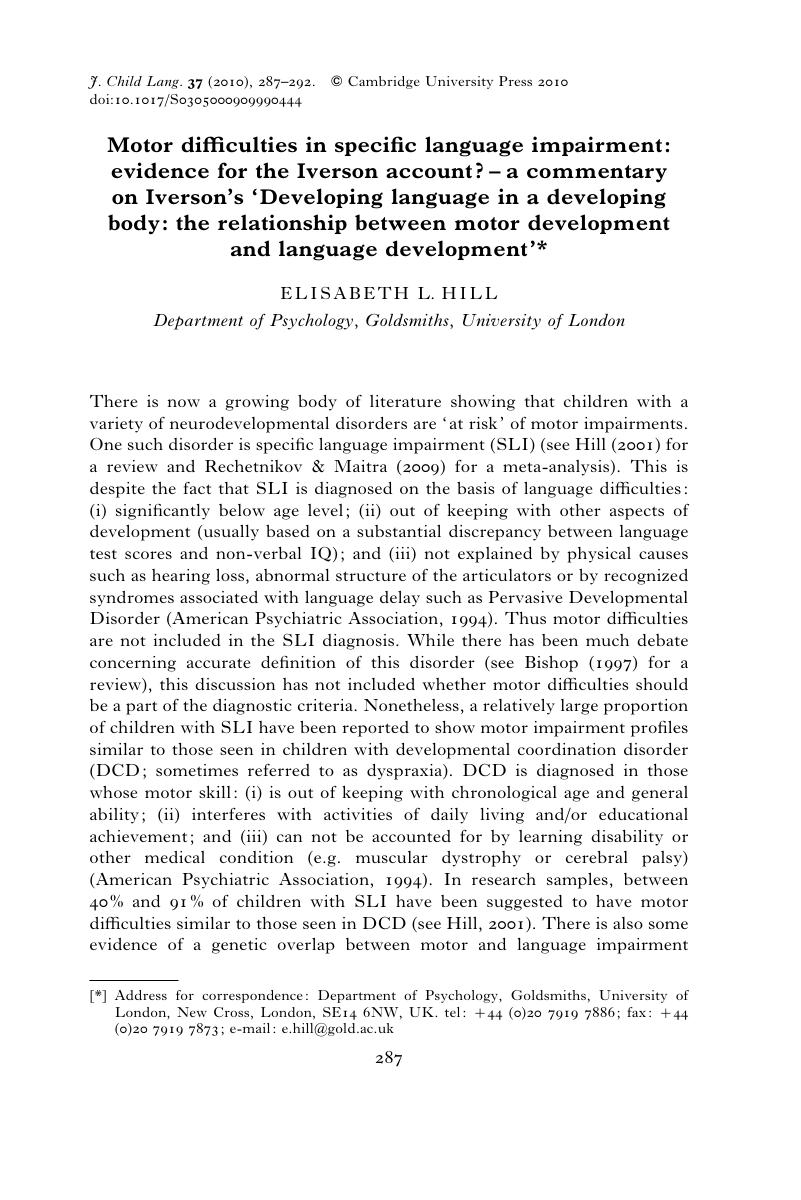Crossref Citations
This article has been cited by the following publications. This list is generated based on data provided by Crossref.
Kunnari, Sari
Saaristo-Helin, Katri
and
Savinainen-Makkonen, Tuula
2012.
Phonological mean length of utterance in specific language impairment: a multi-case study of children acquiring Finnish.
Clinical Linguistics & Phonetics,
Vol. 26,
Issue. 5,
p.
428.
Lee, Joanna C.
and
Tomblin, J. Bruce
2012.
Reinforcement learning in young adults with developmental language impairment.
Brain and Language,
Vol. 123,
Issue. 3,
p.
154.
Liu, Ting
Breslin, Casey M.
and
ElGarhy, Sayed
2016.
Comorbid Conditions Among Children with Autism Spectrum Disorders.
p.
91.
Kelmanson, I.A.
2019.
Co-morbid developmental impairments and their co-occurrence in five-year-old boys with autism spectrum disorders.
The European Journal of Psychiatry,
Vol. 33,
Issue. 4,
p.
165.
Albert, Phebe
Romski, MaryAnn
Sevcik, Rose A.
and
Morris, Robin D.
2021.
Patterns of Cognition, Communication, and Adaptive Behavior in Children With Developmental Disabilities.
American Journal on Intellectual and Developmental Disabilities,
Vol. 126,
Issue. 4,
p.
324.
Mogren, Åsa
Sand, Anders
Havner, Christina
Sjögreen, Lotta
Westerlund, Anna
Agholme, Monica Barr
and
Mcallister, Anita
2022.
Children and adolescents with speech sound disorders are more likely to have orofacial dysfunction and malocclusion.
Clinical and Experimental Dental Research,
Vol. 8,
Issue. 5,
p.
1130.





